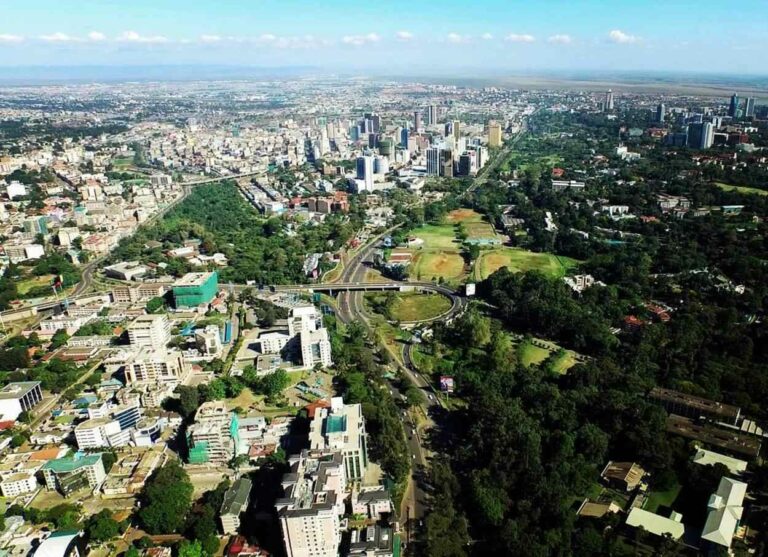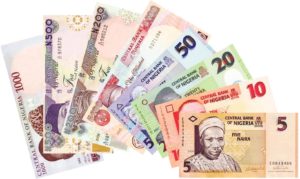Kenyan economy: Key sectors, challenges and more

Kenya has a significant flux of startup companies in the technology space, the city of Nairobi is currently Africa’s second-largest city with the most startups after Lagos, up until 2019, Nairobi held the spot as the city in Africa with the most tech startups, earning it the nickname “Silicon Valley of Africa”
East Africa s currently the fastest developing region on the African continent and also possesses the strongest economic union in Africa. Kenya takes the lead as the major economic powerhouse in East Africa and has maintained a pace that has attracted commendation from policymakers and analysts over the years.
This article takes a closer look at the Kenyan economy.
Biggest contributors to the Kenyan GDP
1. Agriculture
Kenya’s economy is heavily dependent on agriculture, which provides employment for a large section of the people and helps provide food security. roughly 60% of the rural population has a job in the industry, which contributes roughly 25% of Kenya’s GDP.
Tea, coffee, horticultural goods, and fresh vegetables are important agricultural exports that have experienced a significant rise in demand from foreign markets.
2. Services sector
Driving Economic Growth Kenya’s economy is now being driven mostly by the services sector. It covers several related industries, such as banking, telecommunications, travel, and transportation. Particularly in the financial sector, innovation in mobile banking and financial technology (fintech) has enabled significant expansion. M-Pesa, a mobile money service from Kenya, has become well-known around the world for its revolutionary effects on financial inclusion.
Aside from that, Kenya’s diversified wildlife, breathtaking scenery, and rich cultural legacy offer the tourist industry tremendous potential. The government has worked to boost tourism by upgrading visitor experiences and improving infrastructure, which has increased tourist arrivals and foreign exchange profits.
3. Manufacturing
Promoting Industrialization Another important industry that boosts Kenya’s GDP and economic development in manufacturing. Through programs like the Big Four Agenda, which emphasizes manufacturing, affordable housing, universal healthcare, and food security, the government has given industrialization priority.
The manufacturing industry has expanded significantly, especially in sectors like textiles and apparel, food processing, and building materials. The creation of Special Economic Zones (SEZs) has also encouraged export-oriented industry and drawn in foreign capital.
Key economic development initiatives in Kenya
1. Infrastructure
Investments in infrastructure have played a pivotal role in propelling Kenya’s economic growth. Ambitious projects, including the Standard Gauge Railway (SGR), expansion of road networks, and port upgrades, have enhanced transportation efficiency and reduced the cost of doing business.
Moreover, the development of reliable energy sources, such as geothermal and renewable energy, has stimulated industrialization and improved competitiveness.
2. Innovation and technology
Kenya has become a technology innovation hotspot in Africa, gaining the moniker “Silicon Savannah” for good reason. The spread of mobile technology has aided the expansion of mobile banking and digital payment systems, enhancing financial inclusion and credit access for small and medium-sized businesses (SMEs).
The growth of tech firms has drawn both domestic and foreign investors, encouraging entrepreneurship and creating job possibilities, particularly for young people.
3. Macroeconomic stability
Kenya has maintained a strong macroeconomic outlook over the years. This consistency has attracted major investments into the nation, with the nation ranking as the best investment destination in Africa ahead of South Africa and Nigeria.
Kenya has a stable exchange rate coupled with low inflation and a significantly strong fiscal policy on its economy. This consistent stability has fostered an avenue for increased growth in the Kenyan economy.
4. Direct investment (FDI)
Kenya has successfully attracted FDI by using its strategic position, competent labour, and attractive business environment. Reforms have been made by the government to simplify bureaucratic procedures, eliminate corruption, and improve investor protection.
FDI has greatly aided the growth of industries like manufacturing, construction, and services, propelling economic growth and job creation.
5. Economic diversification
Economic diversity is a powerful indicator of a country’s economy. Kenya’s economy pays great attention to diversification which in turn makes it adaptable to the ever-changing global market as well as pulls the nation off its reliance on a single industry.
From agriculture to tourism, technology to manufacturing, Kenya has met the pace of modernizing its various industries and attracting a stable employment market for its citizens.
Challenges and strategies
Despite its progress, Kenya faces several challenges on its journey towards sustainable economic development.
1. Income inequality and poverty
Addressing income inequality and poverty is a critical concern for Kenya. The country grapples with a significant wealth gap between different segments of society.
Tackling this challenge necessitates a comprehensive approach, encompassing policies that promote inclusive growth, enhance access to quality education and healthcare, and create opportunities for small-scale farmers and informal sector workers.
2. Unemployment and youth empowerment
Kenya faces the pressing issue of high youth unemployment, which poses social and economic challenges. The government has placed a strong emphasis on empowering the youth through initiatives such as the Ajira Digital Program.
This program offers digital skills training and connects young people to online work opportunities. Encouraging entrepreneurship, vocational training, and fostering private sector growth are crucial for job creation and harnessing the potential of Kenya’s young population.
3. Infrastructure and logistics
More infrastructure and logistics expenditures are required to promote long-term economic growth. Increasing port efficiency, increasing inter-regional connectivity, and investing in dependable power supplies would boost the country’s competitiveness and attract more investors.
Public-private partnerships can help mobilize resources for infrastructure development, opening the door for improved connectivity and economic efficiency.
Conclusion
Kenya’s economy displays resilience and immense potential for sustained growth. The government’s commitment to macroeconomic stability, diversification of sectors, infrastructure development, and technological innovation has laid a strong foundation for a prosperous future.
Nonetheless, addressing challenges such as income inequality, unemployment, and infrastructure gaps is imperative to ensure inclusive and equitable growth. Through effective policies, strategic investments, and collaborations, Kenya can navigate the path towards becoming a vibrant and prosperous economy in Africa.
Don't miss a thing. Follow us on Telegram and Follow us on WhatsApp. If you love videos then also Subscribe to our YouTube Channel. We are on Twitter as MakeMoneyDotNG.





